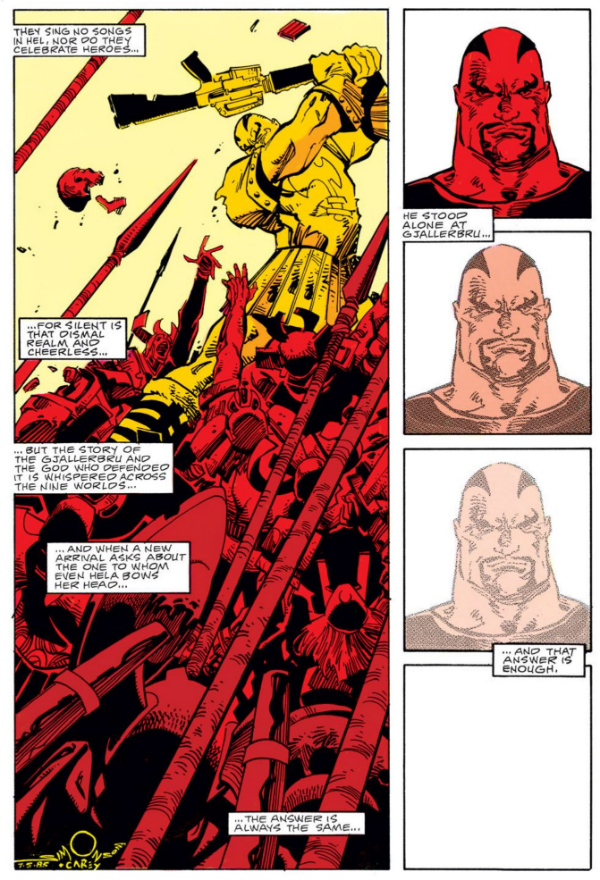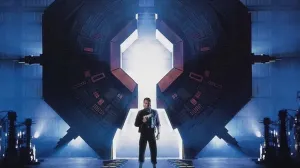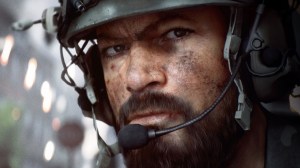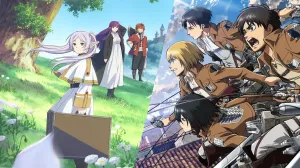As part of its year-long celebration of its 75th anniversary, this week Marvel released a special edition magazine that provides articles, insights and interviews about some of the company’s greatest highlights and achievements over the years.
Videos by ComicBook.com
In the spirit of this diamond jubilee celebration, over the next few weeks, a series of lists marking Marvel’s 75 most iconic moments will run on ComicBook.com. These lists will point out comic book moments that have gone on to define the “House of Ideas” and its extraordinarily unique cast of characters.
Let’s start the countdown with moments #75-61:

75. Death of Johnny Storm
From: Fantastic Four #587 (March, 2011)
For years, Johnny Storm, aka, the Human Torch had been portrayed as the immature, wise-cracking kid in Marvel’s “first family,” the Fantastic Four. But in the final installment of the acclaimed “Three” storyline, Jonathan Hickman and artist Steve Epting send Johnny off in the most heroic way possible. Johnny single-handedly stares down an Annihilation Wave coming from the Negative Zone and presumably dies fighting off the alien invaders. While it’s a valid criticism that the character’s rather quick resurrection (less than a year later), cheapened the emotional impact of Storm’s death, it’s still a defining moment to watch this man-child sacrifice himself in such extraordinary fashion.

74. Pizza Dog
From: Hawkeye #11 (August, 2013)
Ever since the debut of Hawkeye in Fall 2012, writer Matt Fraction and an assortment of artists, have been earning critical acclaim for their unique style of storytelling. However, the comic reached new heights in creativity with its “Pizza is My Business” issue, which tells a full-length story from the perspective of the book’s canine character, Lucky (or “Pizza Dog”). As a result, the issue’s narrative is driven almost entirely from visuals, with only a few select words (that a dog would be able to understand) thrown in. The comic was rewarded for its ambition with a 2013 Eisner Award for “Best Single Issue” and its placement in the Marvel 75th Anniversary Omnibus, which will be released in November.

73. Nick Fury vs. Baron Von Strucker
From: Strange Tales #158 (July, 1967)
Nick Fury and the government espionage agency S.H.I.E.L.D. received a dramatic makeover in the late-1960s when Jim Steranko took over for Stan Lee and Jack Kirby on both scripting and art duties for the Fury-centric half of Strange Tales. Steranko brought a hipper, more contemporary style to the book and its cast of characters, influencing the visual depiction of Fury and S.H.I.E.L.D. for decades to follow. In the final three issues of his first Strange Tales arc, Steranko crafts a story that pits Fury against his old World War II adversary Baron Von Strucker, the Supreme Leader of the terrorist group, Hydra. The two engage in a wild battle, which includes Fury using a “face-changing” gizmo to fool Hydra, leading to Strucker’s incineration.

72. “I’m Home”
From: The Incredible Hulk #377 (January, 1991)
With its garish, neon green and pink cover, an unknowing reader picking up a copy of this comic today might mistakenly dismiss it as just another 90s gimmick. However, inside is a storyline that marks the pinnacle of the first half of Peter David’s run scripting Hulk. Throughout his tenure, David explored some of Bruce Banner’s different personalities which led to the physical manifestations of the Green and Grey Hulks. In Hulk #377, Banner meets with Doc Samson and Ringmaster, and while under hypnosis, his multiple personalities merge with each other to create one Hulk that is both extraordinarily smart and viciously powerful. When Banner leaves Samson’s quarters as this new Hulk creature, announcing to Betty, “I’m home,” a whole new era of Hulk comics kicks off.

71. Birth of Venom
From: Amazing Spider-Man #299 (April, 1988)
As one of the most popular Marvel creations from the past 30 years, Venom ushered in an entire era of hip and cool villains that, by popular demand, evolved into anti-heroes/heroes. Adding to Venom’s meteoric rise to superstardom, was the phenom who co-created the character, artist Todd McFarlane, who made such a name for himself working on Amazing Spider-Man and Spider-Man in the late 1980s/early 1990s, he went on to be a founding member of Image Comics in 1992. Leading up to Venom’s introduction, Spider-Man was seemingly being taunted by a character in shadow. When Venom reveals himself by indicating that he knows who Spider-Man is under the mask by threatening Peter Parker’s wife Mary Jane, a brand new threat unlike anything Spidey has ever seen before is unleashed.

70. Skurge’s Last Stand
From: Thor #362 (December, 1985)
Walt Simonson’s character-changing writer/artist run (with some issues illustrated by Sal Buscema) is filled with a number of wonderful moments, but none may be more emotionally powerful and surprising as Skurge’s last stand against the forces of Hel. Prior to the story, Skurge, or the Executioner, had mainly been depicted as a bit of a lovesick puppy following around the Enchantress. But when Thor and the forces of Asgard march into Hel to rescue a number of souls from Earth, the crew needs somebody to defend the bridge back to Asgard. Skurge shockingly volunteers and sacrifices himself – transforming the character into a legend both in the minds of Asgardians and comic book readers.

69. Magneto Defeats Apocalypse
From: X-Men Omega #1 (June, 1995)
X-Men fans were stunned in the mid-1990s when one month, Marvel ended all of its X-books and relaunched these series as new stories featuring set in an alternative timeline. During the “Age of Apocalypse” event, Magneto led the X-Men in the name of the deceased Charles Xavier, while the villain Apocalypse launches a war against all of humanity and any mutant that opposes him. The story takes a number of turns over the span of dozens of tie-in issues until the X-Men Omega one-shot when Magneto succeeds in ripping Apocalypse in two moments before the timeline is reset. In words that are eerily similar to what readers had often heard from Xavier to Magneto, as Magneto walks away from Apocalypse’s corpse, he tells the fallen mutant “what a world it would have been” if they could have just fought on the same side – a fitting end to this unique event.

68. Jarvis Beaten
From: Avengers #275 (January, 1987)
Considered by many fans to be the greatest Avengers story ever, Roger Stern’s “Under Siege” placed “Earth’s Mightiest Heroes” in unimaginable peril against Baron Zemo’s newly-reformed Masters of Evil. In one of the most uncomfortable (but impossible to put down as a reader) scenes, the Masters of Evil brutally beat the Avengers’s loyal butler Jarvis in front of a captured Captain America and Black Knight. Never had the Avengers looked as vulnerable as they do in this story. And while Jarvis survived the beating, at this time, this level of brutality to innocent characters not named Gwen Stacy was essentially unheard of in comics. The heroes ultimately win the battle against Zemo, but given the carnage caused by the Masters of Evil, there’s definitely a sense of the war being lost.

67. Introducing Miles Morales
From: Ultimate Comics Fallout #4 (October, 2011)
Marvel made headlines two times over in 2011 when it killed off the Ultimate version of Peter Parker/Spider-Man and then a few months later introduced his replacement, Miles Morales. We would later learn that Miles, a black/latino teenager, was bitten by a similar radioactive spider that had given Peter his extraordinary powers. However, Miles chooses to make his debut as Spider-Man while the world is still mourning Peter’s death, causing him to rethink his attire, which is an exact replica of his predecessor’s. Politically, Marvel’s selection of a minority teen to replace Peter elicited a whole gamut of opinions. As for the stories, Ultimate Spider-Man has never been more inspired as it has been with Miles in the lead role.

66. The Wedding of Northstar and Kyle
From: Astonishing X-Men #51 (August, 2012)
Speaking of political reactions to comics, Marvel again made headlines in 2012 when it published the the company’s first-ever gay marriage between the mutant Northstar and his partner Kyle. Prior to the comic, Northstar already held a distinguished place in industry history when he became the first openly gay superhero in a mainstream comic book. For Astonishing X-Men #51, creators Marjorie Liu and Mike Perkins built off the recently (real-world) approval of gay marriage in New York State to craft this landmark moment. Meanwhile, with this story, Marvel demonstrated just how far the industry has come in terms of acceptance. While gay relationships were typically buried in comics years ago for fear of critics finding the storylines too “mature,” the Northstar/Kyle wedding was openly and proudly promoted across all media.

65. Meet the New Guardians of the Galaxy
From: Guardians of the Galaxy #0.1 (April, 2013)
Those who followed Dan Abnett and Andy Lanning’s run on the second volume of the Guardians of the Galaxy in the late-2000s were likely already aware of its core characters: Star-Lord (Peter Quill), Rocket Raccoon, Gamora, Drax and Groot. But given the relative obscurity of the series, Marvel elicited a lot of head-scratching when it announced in late 2012 that a film based on these characters was in development. Then in early 2013, Marvel demonstrated that it was all in on the Guardians when it published a prologue/flashback issue with industry all-stars Brian Michael Bendis on script and Steve McNiven on pencils. The series has been a success, and helped generate the interest needed that made this summer’s Guardians of the Galaxy film the highest-grossing movie of the year.

64. Death of Ultimate Peter Parker
From: Ultimate Spider-Man #160 (August, 2011)
While this story was published in an era where mainstream comic book characters were seemingly being killed off every other month, Marvel made the bold choice to (sorta) permanently kill the flagship character of its Ultimate line, Peter Parker. Brian Michael Bendis reunited with Ultimate Spider-Man’s original penciller, Mark Bagley, to craft a rarity for the industry – a superhero death that felt emotionally earned based on its build and sense of finality. Peter dies while fighting the Ultimate Green Goblin, defending his Aunt May and the rest of his loved ones, just as he promised himself he would do after his arrogance led to his Uncle Ben’s death in the comic’s very first arc. In one of the issue’s final images, Peter’s on-again/off-again girlfriend Mary Jane, cradles his dead body, echoing Gwen Stacy in the epic “The Night Gwen Stacy Died” issue from the 1970s.

63. Introducing the Superior Spider-Man
From: Amazing Spider-Man #700 (February, 2013)
In one of the most controversial storylines of all time, Amazing Spider-Man-scribe Dan Slott “killed” off Marvel’s golden goose in Peter Parker/Spider-Man and replaced him with his longtime nemesis, Doctor Octopus. For extra salt in fans’ wounds, this switcheroo was accomplished via a “Freaky Friday” body/brain swap, which gave the dying Otto Peter’s body, while Parker was left to rot in Doc Ock’s disease-ridden corpse. Still, likely realizing that a story of an evil villain masquerading as a hero would be a hard sell over the long haul, Peter transfers all of his pain, suffering, morals, power and responsibility to Otto before he dies, making the villain realize that it was his duty to carry on in Spider-Man’s name as the “Superior” Spider-Man. For the 14 months it was published, Superior Spider-Man would be one of Marvel’s best-selling titles. Peter eventually returned earlier this year.

62. Captain America Betrayed
From: Captain America #175 (July, 1974)
In a storyline that resembled the very real world of politics – namely the Watergate scandal that rocked Richard Nixon’s presidency in the 1970s – Captain America dealt with a major crisis of his own. While investigating a massive criminal conspiracy, Cap finds that the person behind it all is the President of the United States. Upon making this discovery, the President commits suicide, leading to Captain America to (temporarily) renounce his role as the Red, White and Blue Avenger. While various creators had developed Captain America’s character so that he was more complex that the one-dimensional symbol of American jingoism he was when he was first created in World War II, Cap’s discovery in Captain America #175 marked his most dramatic turn to that point. Never before had Captain America been so profoundly betrayed by the country he had sworn to protect.

61. The Secret Invasion Takes Hold
From: Secret Invasion #2 (July, 2008)
With its “who do you trust” tagline, the commercially successful Secret Invasion miniseries pit the heroes of the Marvel Universe against the Skrulls – who as shape-shifters were all posing as the heroes of the Marvel Universe. This subversive, long-term invasion by the Skrulls created a feeling of widespread paranoia and confusion unlike anything Marvel’s most iconic heroes have ever collectively faced before. These emotions are best captured in the opening image of the mini’s second issue, which depicts all of the heroes facing off against identical imposters. Except nobody is really all that sure about who is the actual hero and who is the Skrull, which in turn extends the feelings of paranoia and confusion to the reader.








